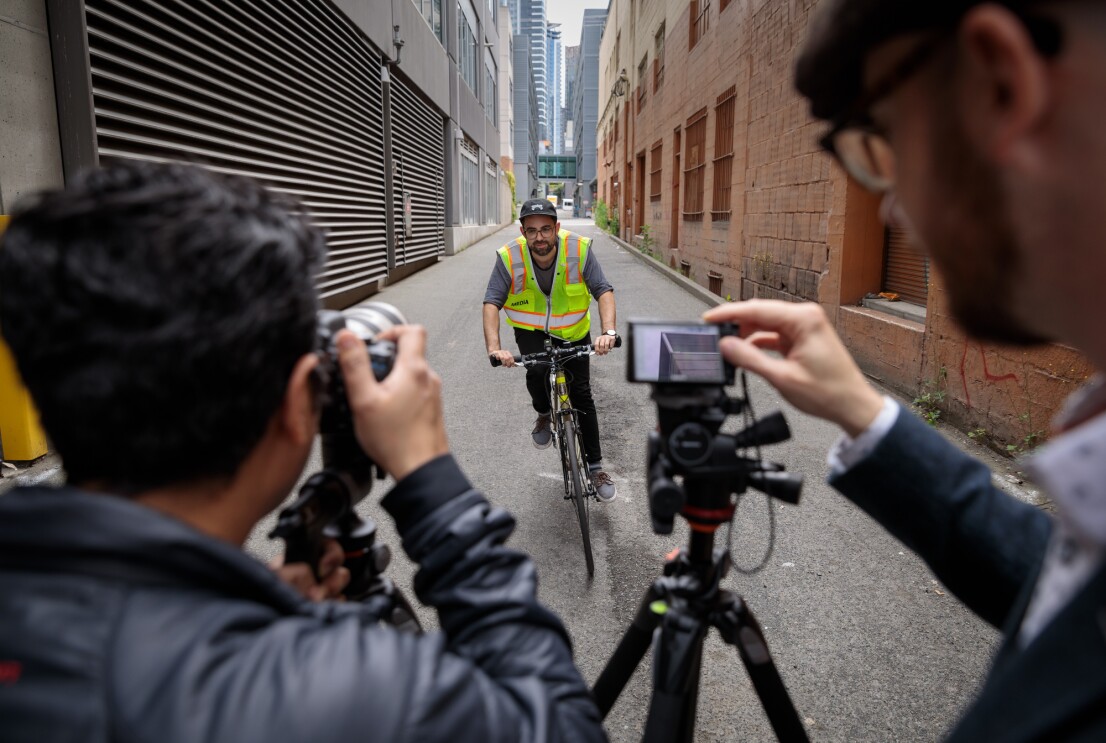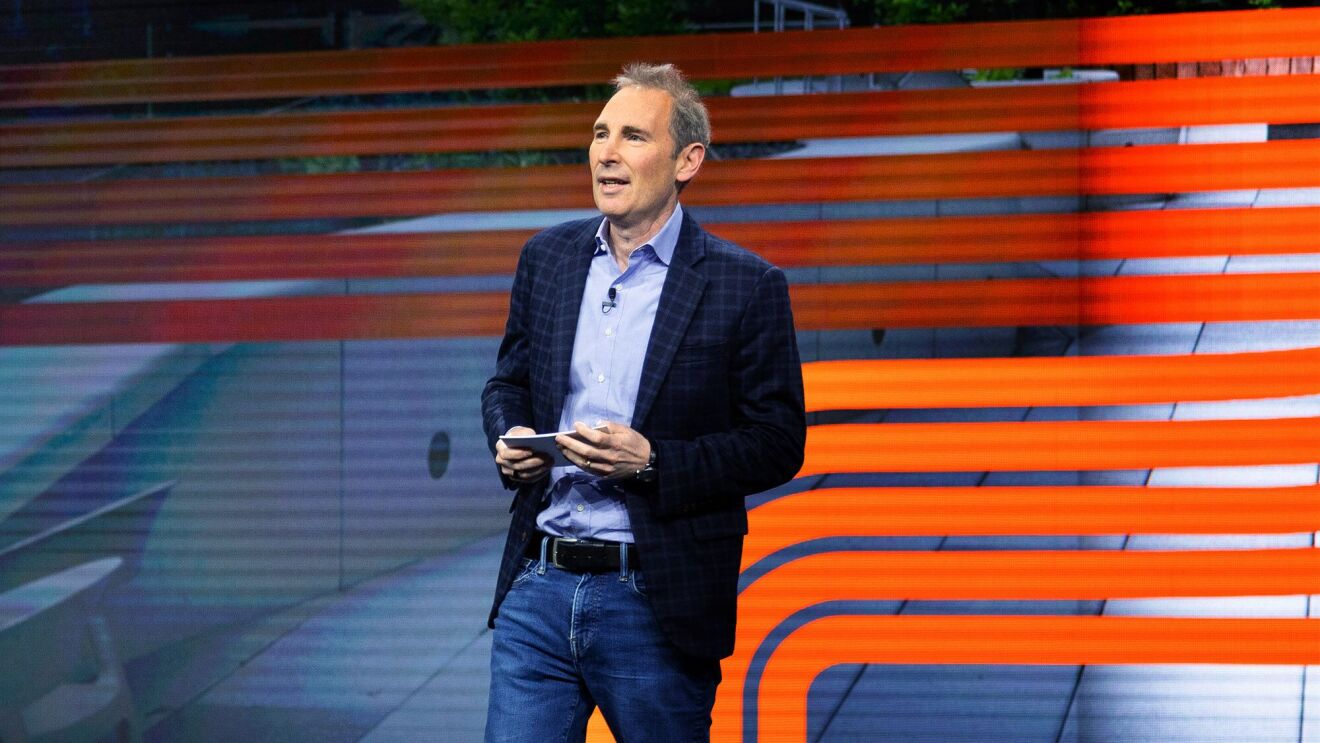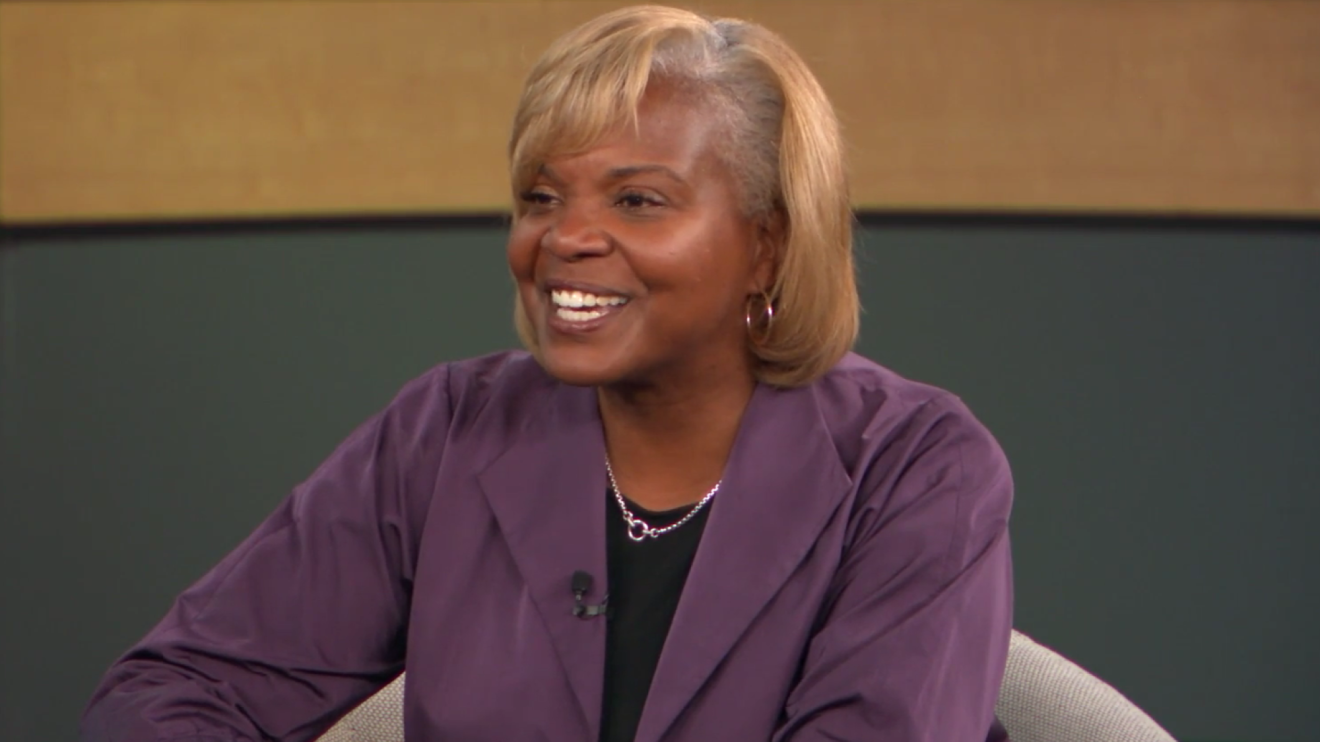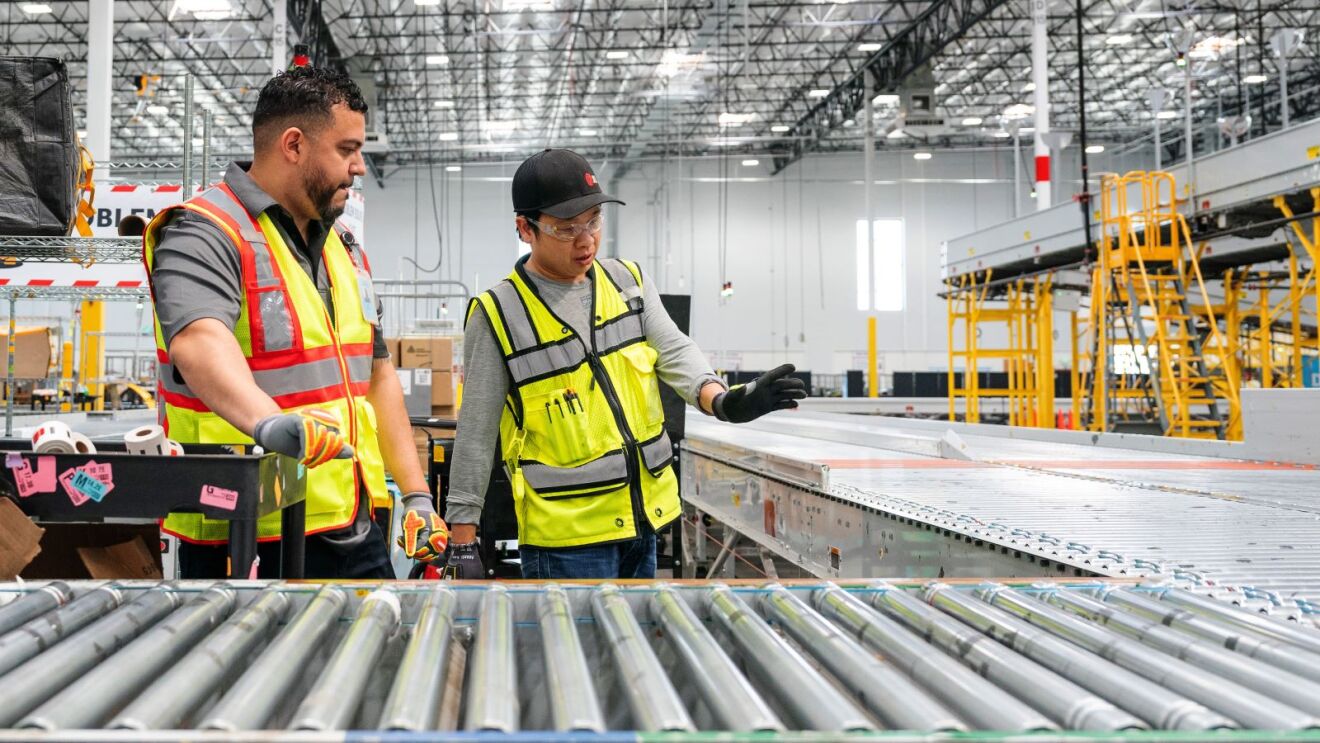Two photographers stand shoulder to shoulder in an alley. They look up from their cameras, notice a delivery truck idling at their heels, and hurry to clear a path.
 Staff members conduct DPReview's "bike test" on two cameras in an alley in Seattle's South Lake Union neighborhood.Photo by JORDAN STEAD
Staff members conduct DPReview's "bike test" on two cameras in an alley in Seattle's South Lake Union neighborhood.Photo by JORDAN STEADAlmost as soon as the truck eases past and the photographers go through the trouble of getting their tripods set up again, a bicyclist bears down on them, weaving closer and closer before finally swerving around them and their gear. The cyclist makes a U-turn, pedals to the far end of the alley, doubles back, and again rides toward the photographers.
"So unpredictable," one photographer says as the bike passes them again.
"That was good," the other calls out to the cyclist. "One more time."
This whole thing is a test. An experiment, really. The photographers and the cyclist all work for Digital Photography Review, a repository of some of the nerdiest, most useful camera knowledge on the planet.
DPReview was founded in December 1998 and acquired by Amazon in 2007. It's one of many examples of how an entrepreneurial company can join Amazon and be empowered to double down on doing what its customers love. The site sums up its mission over the last 19-plus years like this: "We believe in fact-based and unbiased content with as much detail as we can provide, gained through our testing and real-world analysis of gear, technology, and techniques."
The real-world analysis sometimes involves a road trip to a speedway to test whether a state-of-the-art smartphone can actually shoot good slow-motion footage of the roaring dirt bikes (we take you to the track in the short video below). More often, getting out into the real world involves going outside the DPReview offices, to an alley in Seattle's South Lake Union neighborhood where the "bike test" is performed.
They do the test because camera shoppers can learn a lot from apples-to-apples comparisons of how well (or how poorly) different autofocus cameras manage to track a swerving cyclist — especially if the customer ultimately wants to snap pictures of unpredictable subjects, whether that be a toddler amped up on birthday cake or a gazelle bounding around the savanna.
Not just big, fancy cameras
After the test, the photographers go back to their desks. Dan Bracaglia locks up his bike, goes inside, and returns to one of his own current projects. He and fellow DPReview staff member Wenmei Hill lean over a desk in a cubicle.
From a distance, they look like they might be playing a memory game with a deck of cards. But what's actually laid out in neat rows on the desk are dozens of little photos that Hill made with instant-print cameras that Bracaglia is reviewing. It's a standard part of life at DPReview to go home with a camera or two or three and snap some test shots in support of a teammate's latest project.
Hill points to a print. "When I let too much sun into it, then it just blew it out completely," she says and points to another print. "That's from the same vantage point."
01 / 03
"Oh, interesting," says Bracaglia. "So it really is about how you frame it up."
"Yeah, you have to get rid of that sky, basically," Hill says.
They finish picking images that will get published in Bracaglia's review. Hill gathers up the rest, which include photos of her children.
There are experienced photographers who sneer at little instant cameras or curse the rise of smartphone photography. Hill isn't one of them. She's spent two decades as a photographer and photography teacher, but she's glad to work at a place that takes phones seriously and tests their performance like it would any other camera. And she's excited about what it means to live in a world where taking photos isn't just something people do on special occasions.
"People are starting to think like a photographer without even realizing it," she said. "And then maybe they really get into it, and they're like, 'My kid is on stage, and I can't get the shot I want because my phone can't zoom.' Okay, now you're going to need a camera. You've already got the appetite for what you want, and now you just need tools that will let you do it in more places and in more ways."
More relevant to more people
Hill joined DPReview in late 2014 full of ideas for how the site could “make the questions it answers more relevant to a broader audience.”
In the years since, she’s been part of a team that’s reinventing itself using tried and true Amazon concepts, such as the company’s leadership principles. One fundamental Amazon idea — “start with the customer and work backwards” — influenced DPReview to make its research more digestible to people who aren’t already photography experts. The team increasingly tries to meet the needs of average people who just want to know if a particular camera will help them take better photos of their kid’s soccer game. Visitors to dpreview.com are starting to see passages like this one in reviews:
Cameras can serve different purposes for different photographers; the right tool for one person's job might be the wrong tool for someone else's hobby. With that in mind, we'll be taking a look at how the a7 III stacks up for a variety of common uses.
Short DPReview videos also appear on many Amazon.com product pages for cameras, allowing customers to tap into the team’s insights while they shop.
The fun balancing act, Hill said, is to evolve while maintaining "the core of what we do — the very geeky, techy, get-down-to-the-research details of how things work.”
Biophysicist with a camera
At the heart of that "geeky, techy" core is Hill's colleague Rishi Sanyal. A lifelong photographer who holds a Ph.D. in biophysics, Sanyal is fully in his element when explaining everything that can be learned by using a camera to take a single photo of DPReview's studio shot chart.
"We test detail and color resolution by looking at this," he said, pointing to an Austrian banknote from the years before the Euro existed. "It has a ton of really really fine low-contrast detail. As light levels drop and we shoot higher ISOs on the cameras, there's a lot of noise. Also, really bad sharpening will often get rid of fine detail and emphasize big detail. You'll actually see little halos around these boxes instead of this graded black transition. When I break this down, it sounds very technical, but everything exists here to quickly assess some real-world impact of the camera."
When asked, Sanyal said other companies have offered him jobs doing work he knows he would find fascinating, but the work he gets to do at Amazon as a member of the DPReview team is in a category by itself.
"I really think there are tools we can build and information we can provide that doesn't exist today for cameras, for lenses, for smartphones," he said. "I'm doing this because I really believe we can create a better product — not just for customers but also because I'm a customer of what we're producing. I've evolved as a photographer. I used to do a lot of landscapes. Having a child changed my needs. I mean, photography is part of our lives. When I think about what did I do last year, I just scroll through my photos. Recording life is so important. It's what you think back on."
01 / 03
Trending news and stories















